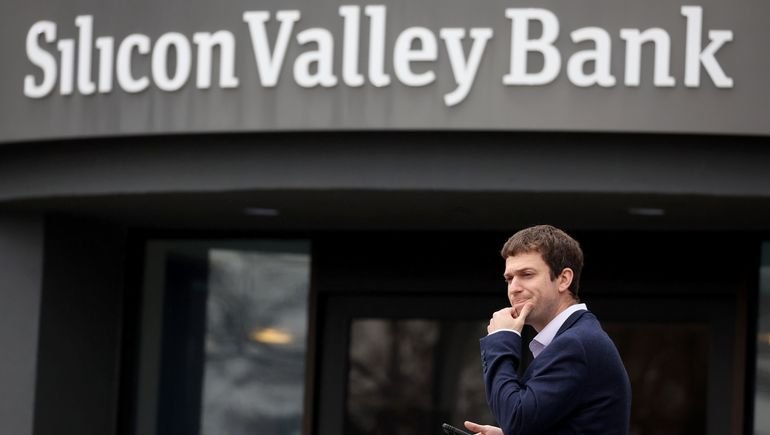SVB’s collapse had limited impact on biopharmas — but a broader financial crisis could change the landscape

The collapse of Silicon Valley Bank has ignited fears of a financial meltdown that hearkens back to the crisis of 2008, and although biopharmas had a sizable stake in SVB’s assets, the sector has been mostly sheltered from the storm.
But as more banks have shuttered their doors or been propped up by bailouts, a financial cataclysm is still possible, and even relatively safe harbors like the life sciences could see some of the effects.
On March 10, the dominos began to fall. SVB — which was known as a refuge for tech companies and also represented many healthcare firms to the tune of $173 billion in deposits — became the largest bank to fail since the global financial crisis and the second largest in history behind Washington Mutual in 2008. Signature Bank soon followed SVB into the void, while First Republic Bank was salvaged through a bailout, though its fate is still uncertain. Credit Suisse survived the ordeal through a takeover by UBS.
“Overall, the heavy majority of responses coming in from our covered companies are citing minimal to no exposure.”
Salim Syed
Senior biotech analyst, Mizuho Securities
Of SVB’s healthcare deposits, 9% were from early-stage life sciences companies while only 3% were from others in life sciences, according to a report from CB Insights, which also pointed out that the bank “expected to see continued growth in its healthcare/life sciences portfolio in 2023, indicating that market volatility was ‘fueling demand’ for loans.”
SVB had also previously acquired healthcare investment bank Leerink Partners in 2018, cementing themselves as a go-to spot for the industry.
What spurred the run on SVB were reports that it was performing an underwritten public offering to raise as much as $2.25 billion to cover securities losses.
Insignificant exposure
Many of the biopharma companies that deposited cash at SVB have said in statements that their exposure to the bank’s collapse is minimal or insignificant, according to a survey conducted by analysts at Mizuho.
For example, Sage Therapeutics had a small amount of cash in an SVB account, “which the company considers to have no meaningful impact to its $1.3 billion year-end cash balance,” Mizuho senior biotech analyst Salim Syed said in a March 12 note.
Bigger companies like Amgen, Merck and Gilead also claimed no significant exposure to the bank’s failure. Of course, pharma giants with more diverse holdings tend to be rocked less when a bank fails.
“Overall, the heavy majority of responses coming in from our covered companies are citing minimal to no exposure,” Syed said.
Cantor Fitzgerald analyst Louise Chen pointed out in a note that the potential greater exposure of smaller companies to the SVB failure could bring about M&A opportunities for the larger ones who have been targeting biotechs that would now have lower valuations.
Danish biotech Zealand Pharma held about $23 million at SVB, which represents about 15% of its total cash, the company said in a statement. The company expected to recover all deposits as of March 13.
A joint statement from the U.S. Treasury, Federal Reserve and FDIC said March 12 that depositors would have access to all of their money.
“The U.S. banking system remains resilient and on a solid foundation, in large part due to reforms that were made after the financial crisis that ensured better safeguards for the banking industry,” the statement said. “Those reforms combined with today’s actions demonstrate our commitment to take the necessary steps to ensure that depositors’ savings remain safe.”
Reports have shown that the Federal Reserve was concerned about SVB’s practices more than a year before the collapse, sending repeated warnings to leadership at the bank. Fed authorities pointed to faulty models that exposed depositors to more risk.
As demonstrated by SVB’s failure, the U.S. banking system is in a fragile state. A recent study showed that SVB was not even the worst capitalized bank, with 10% of institutions having lower capitalization — in total, 186 more banks are at risk of collapse even if only half of their clients choose to withdraw. So while the biopharma industry appears to have avoided the worst of the beginning of this financial turmoil, an ongoing banking crisis could change that.
Source link
#SVBs #collapse #limited #impact #biopharmas #broader #financial #crisis #change #landscape